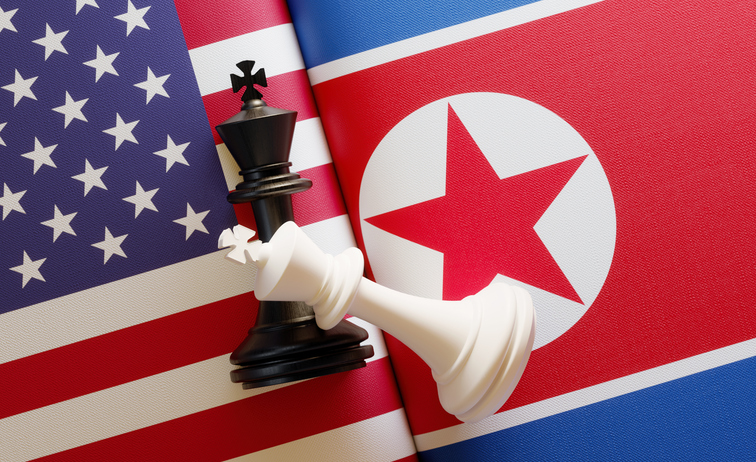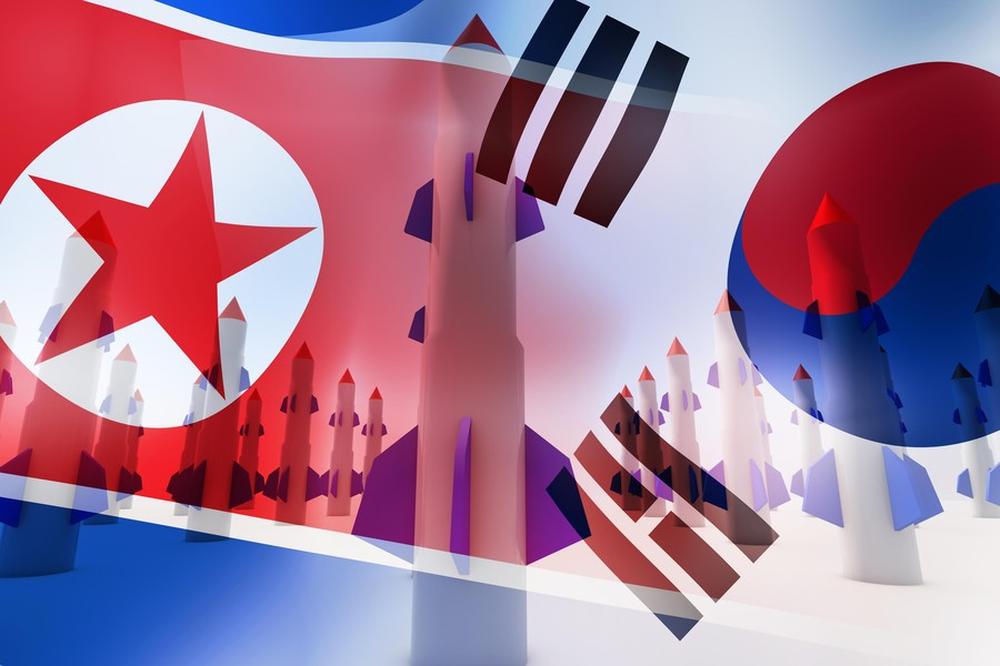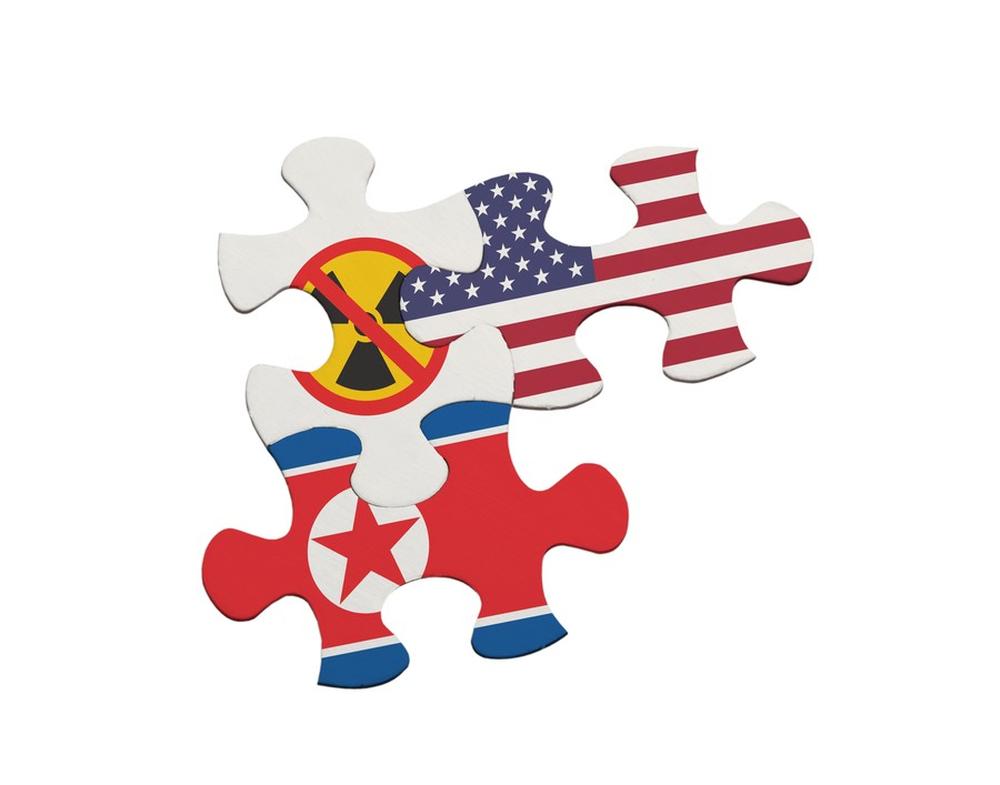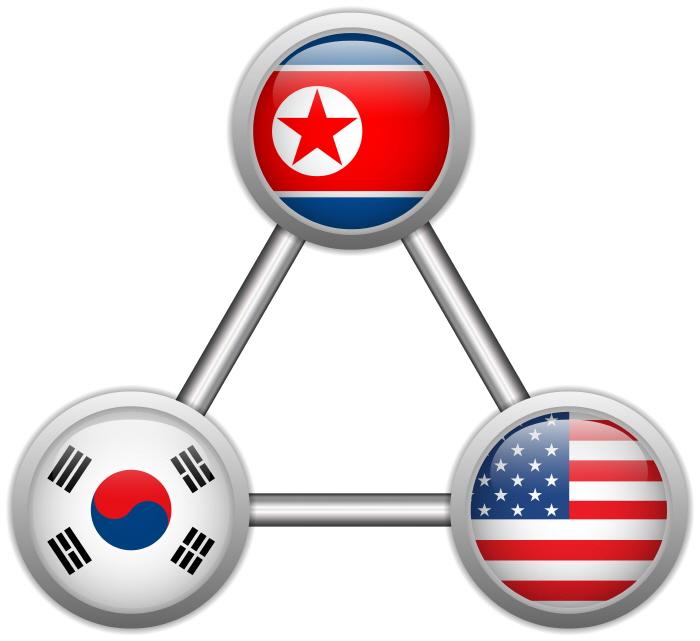- #Global Issues
- #North Korea
- #Security & Defense
- #US-ROK Alliance
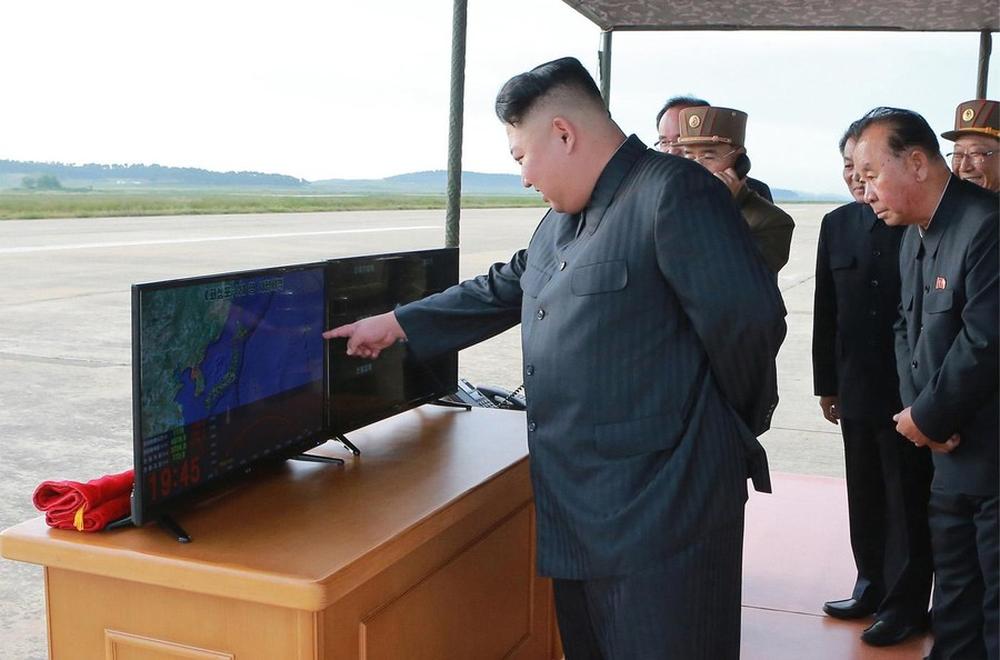
On March 25, North Korea carried out a test-launch of two upgraded KN23 short-range ballistic missiles. Presumably this was the same SRBM that was highlighted in the January 15 military parade, which unleashed much speculation within the Pyongyang watching community about new North Korean capabilities and expectations of tests to come. After all, it had been over a year since the last North Korean “test,” when North Korea launched two unidentified projectiles eastwards over the sea from the Wonsan area on the east coast. Before that, in December 2019, Kim had ridden on a white horse up Mt. Paektu, accompanied by senior military officials, seemingly sending a clear signal that a hardline was in ascendance. This was followed by statements from the Ministry of Foreign Affairs, the chief of the General Staff, and Kim Jong-un about the United States’ continued hostile policy and threats of brinksmanship. In June 2020, North Korea severed the hotline with South Korea put in place as part of the agreement signed at Singapore. Indications and widespread analysis was that Kim was moving away from diplomacy and toward a focus on his nuclear program, which he had put on hold at the end of 2017.
Was this speculation accurate? Given the fact that North Korea has remained relatively quiet over the last two years suggests the Pyongyang watching community may need to recalibrate its framework when it comes to Kim Jong-un’s intentions. Has North Korea refrained from testing and engaging in provocations because COVID has locked down the country and Kim does not want to risk any additional sanctions or is something else at play? Is it possible that Kim Jong-un is engaged in something much more fundamental in terms of policy than a mere tactical shift? Has the military been sufficiently cowed through purges and demotions to make way for this change? At the moment, there are few indications as to whether we are seeing a breakthrough in Kim’s thinking or just crisis management. Embracing the status quo is the safe bet for Pyongyang prognosticators. After all, the nuclear program is the sole source of Kim’s legitimacy given the lack of traction on the economy. But one should not dismiss the possibility that change might be in the offing.
August will be an important month for examining some of these questions. At the beginning of July, a Pentagon spokesman stressed that the joint US-ROK military exercises, scheduled for August, will not be postponed, noting, “Military readiness is a top priority of the secretary of defense. Our combined military training events are a principal method of ensuring our combined alliance readiness.” Up until 2018, the two countries conducted computer simulation exercises and one major field training exercise. Following the Singapore summit, President Trump downsized the exercise (canceling the field exercise), which was further downsized in 2020 because of COVID. The fact that North Korea sees these exercises as threatening and normally carries out its own summer military exercises around the same time gives Pyongyang an opportunity to send harsh strategic messages through provocation or testing, as occurred in 2015 when North Korea planted explosive devices along the DMZ, leading to the injury of several ROK soldiers and a significant escalation of tensions on the peninsula. If Kim Jong-un wants to escalate again as part of a return to brinksmanship, the joint exercises could provide a justification. However, if nothing happens and North Korea remains silent through October 10 (Party Foundation Day), then the Pyongyang watching community should consider reexamining its assumptions about Kim Jong-un’s intentions and long-term strategy.
Kim Jong-un’s Calculus and Intentions
In order to understand Kim Jong-un’s intentions, it is important to understand that these intentions are bounded by two overarching, strategic objectives and influenced by operational and tactical goals that shift within the overall Byungjincalculus. The two bounding strategic objectives are Regime Survival and Perpetuation of Kim Family Rule. Kim Jong-un will not make any decision, be it domestic or foreign/security based that violates either of these objectives. This is the part of his calculus that he inherited from his father and grandfather. These objectives are inviolable.
Legitimacy within the regime is tied to the operational and tactical decisions in support of Kim’s calculus. There are two sources of legitimacy: the nuclear program and the economy. Kim’s decisions with regard to these two sides of Byungjin determine his legitimacy within the leadership, as well as with the larger population. If Kim makes a wrong step, especially at the operational level, such as the failure to secure an agreement in Hanoi, his ability to lead becomes complicated as he has to placate several constituencies, which gain influence in the wake of a misstep. We saw this play out at the end of 2015, when Kim’s first attempt at diplomacy failed, leading to a reset (the DMZ crisis), which also failed. Kim Yang-gon, the head of the United Front Department and the architect of the initial diplomatic outreach beginning in 2013, mysteriously died. He was replaced by the hardliner Kim Yong-chol and North Korea conducted a series of nuclear and missile tests in the run up to and just after the Seventh Party Congress, which ushered in the Kim Jong-un era. With the failure of diplomacy and outside aid to kick start the economy, Kim needed to pivot to national security to bolster his legitimacy going into the important Party meeting.
We saw this play out again at the end of 2017 when Kim Jong-un announced a moratorium on testing in favor of diplomatic outreach. Many conservative commentators have claimed that this shift in focus was caused by increasing pressure caused by international sanctions. That is a fundamental misreading of Kim’s calculus. He was eager to get back to the diplomatic outreach that had begun in 2013, but in order to do that, several things had to fall into place. In 2017, three critical things occurred that changed Kim’s operational calculus. First, the conservative administration in Seoul collapsed and was replaced by a progressive administration, which was eager to engage North Korea. Second, an unconventional president was elected in the United States. President Trump, unlike his predecessors, was not averse to meeting Kim Jong-un in person and held out the potential to do a deal. Third, the barrage of missile tests throughout 2017 got North Korea to a point where it could take a strategic pause and shift back to diplomacy. The Olympics in South Korea provided the opportunity to put this new strategy in place. Kim used the summits that took place in the months following to demonstrate to the hardliners within the regime that the only way out of the box was through engagement, not brinksmanship.
The failure of the summit in Hanoi and the subsequent election of a more traditional US president forced Kim to recalibrate yet again. In the months leading up to the presidential election, Kim decided to stay quiet and only tested short range missiles since they were allowed under the agreement he made with President Trump at the DMZ. North Korea toyed around with engagement in November 2019 at Stockholm, but it became clear that US policy had not changed. Then COVID struck and the regime had to turn inward to handle the increasingly challenging economic and security situation. They tested the KN23 in order to stamp paid on a promise Kim made about a new weapon system and show that the regime was continuing to make progress on its strategic deterrent. They also used parades in the place of tests to tout their increasing strategic and conventional capabilities. Behind the scenes, however, something more important is going on inside Pyongyang. Kim Jong-un is rewiring his leadership to position it to be more responsive and act effectively and efficiently when he returns to diplomacy and sanctions are lifted. Along these lines, authority (not power) has been pushed down the chain of command (highlighted by the creation of the KWP First Secretary position) and an anti-corruption campaign has been sanctioned to firm up the internal lines of communication. The power of the Organization Guidance Department has been reigned in (and tied more closely to Kim’s personal office via Jo Yong-won and Kim Yo-jong) and alternate lines of surveillance and reporting channels have been strengthened, especially within the military sphere. Even the Kim family has been subject to checks on personal loyalty with two of Kim Yo-jong’s key lieutenants allegedly purged in recent days. Kim Jong-un’s outburst at a recent Politburo meeting was a reflection of the frustration he feels because leadership reforms have dragged on slowly and fissures remain as the system continues to adhere to many of its corrupt habits tied to personal and institutional equities.
When we look at intentions, Kim Jong-un is not driven by a Military First mentality. That was made abundantly clear when he recently removed one of his closest advisors and the titular head of the defense industry, Ri Pyong-chol, from the Politburo Presidium and demoted Pak Jong-chon, the Chief of the General Staff, from marshal to vice marshal. Instead, he is driven by a plan laid out by his father in his last will and testament: to develop a strong and prosperous nation. In order to realize this plan, North Korea needs to tie into the South Korean economic engine, which can only happen once Pyongyang and Washington can find a way back to diplomacy and eventually remove the sanctions. The strategy to make this happen can go down one of two pathways: a return to brinksmanship or (Kim’s preference) through engagement if Kim can find a way to persuade the Biden Administration to put something on the table instead of demanding North Korea make the first concession. How long Kim Jong-un will continue to hold out for engagement is unclear. At some point, he might have to return to testing and maybe provocations to make Washington understand that denuclearization as an entry way into negotiations is a non-starter.
Conclusion
Whether the Pyongyang watching community wants to believe it or not, there are two things that are becoming increasingly clear about Kim Jong-un and his vision. First, his calculus is very different from that of his father and grandfather. He thinks strategically and over the horizon instead of relying on tactical, short term decisions. We need to be careful about saying we have seen this before and using the Kim Jong-il era as a template for what is going on now or how Kim Jong-un will make decisions in the future. The pressures, drivers, and challenges, to say nothing of the time frame for Kim Jong-un are very different. As such, his actions in response to internal and external stimuli will be different. That is not to say that Kim Jong-un is not a dictator and does not sometimes act reprehensibly. But, he is a dictator with a different vision. Second, and most important, Kim Jong-un gave us the key to understanding his vision for the future in his first public speech on April 15, 2012, the one hundredth anniversary of Kim Il-sung’s birth. It is all about the economy. That is where he wants to hang his legacy. The nuclear program, while important as a deterrent against US pressure and regime change, takes second place behind fixing and promoting the economy, if not for the entire population, at least for the elites. If Kim wants to make the economy work, he needs to externally get rid of the more crippling sanctions and internally conduct political and organizational reform in order to not fall into the trap that led the collapse of the Soviet Union. This is a high wire act that depends on change inside the regime and an international community that is willing to take a chance, be willing to tolerate a nuclear North Korea for the foreseeable future, and slowly assist the movement of the Hermit Kingdom out of its shell and into the international community.
Ken Gause is the director of the International Affairs Group, a part of CNA's Center for Strategic Studies. He is CNA's senior foreign leadership analyst and has spent the last 20 years developing methodologies for examining leadership dynamics of hard-target, authoritarian regimes. In particular, he is an internationally respected expert on North Korea who has written three books on North Korean leadership. His latest book is "North Korean House of Cards: Leadership Dynamics Under Kim Jong-un." Gause has also published numerous articles on leadership structures for such publications as Jane's Intelligence Review, Jane's Defense Weekly, and the Korean Journal of Defense Analysis. He has a B.A. from Vanderbilt in Russian and Political Science and an M.A. from The George Washington University in Soviet and East European Affairs.
